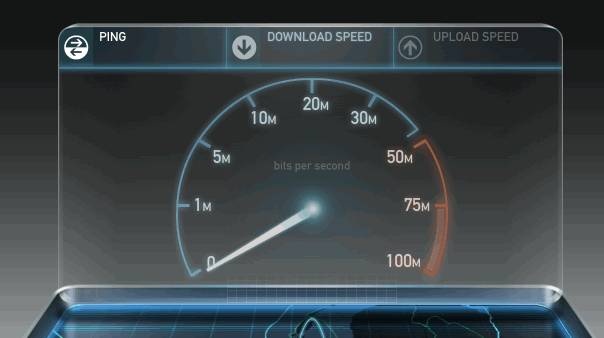
In the past, we have occasionally run into instances where businesses have attempted to use SOHO (Single Office, Home Office) or home networking equipment to build their office or business WiFi network.
We would get a panicked call from a business owner or their IT staff asking for assistance in resolving some disaster created when it failed during a meeting, presentation or event that unfortunately cost them a ton of money—and ultimately credibility.
These instances have increased and I attribute it to two trends:
- The elevation of tech “savviness” by the general user that our current technology-centric world presents
- The evolution of SOHO/ home networking equipment that offers a few new features that were once only found in top dollar solutions
These two factors combine to create the perfect trap for businesses to fall into, where the gear both looks like it would work for a commercial or enterprise environment and it's available at an affordable price.
Here are 11 reasons why this is a dangerous combination and why overlooking this could be disastrous for your business.
1. Resources
There is a big difference between how many users home networking equipment can handle and enterprise gear can handle.
A home WiFi router is not built to the same hardware specifications as an enterprise-grade access point. It's built to last only a couple of years and support a couple of users at a time.
In a typical home, you might have 4-5 users on at a time.
On the other hand, enterprise equipment is built to last 5+ years and handle dozens or hundreds of users at a time.
The CPU, memory and storage on enterprise-grade hardware is built on specs well beyond the capacity of home equipment to handle the large volume of traffic and processing that is present in these environments.
home networking equipment will degrade in performance under large loads and in some instances, will completely lock up and require a reboot to begin functioning again.
2. Features
SOHO gear does not have the depth or breadth of features that commercial equipment provides.
While it has evolved in the past few years to provide new features once only found in high end solutions it still falls far behind enterprise equipment.
The features built into hardware engineered for enterprise WiFi networks have been done so to meet the unique demands and constraints of the businesses they support.
3. Resiliency
It lacks the ability to self-heal or provide failover options to maintain service.
Commercial equipment is engineered for environments where down time or outages are not tolerated.
Failover or high-availability features are the norm for commercial\enterprise equipment and are found at multiple points in the architecture so that service can be maintained on a 24x7x365 basis.

If a SOHO/ home WiFi router fails it cannot automatically fail over to a second router to reroute Internet traffic.
If a home router fails, it doesn’t have the ability to fill in an RF coverage hole created by that failure nor is it able to move the management intelligence to another AP as a result of that failure.
4. Stability
Home network equipment software does not undergo the same rigorous development and testing that enterprise equipment is subjected to.
SOHO gear manufacturers don’t employ the same level of engineering and development staff that enterprise manufacturers do.
This is because enterprise equipment must have software that can handle the processing loads present in the enterprise environment and it requires a high-level of stability.
5. Security
It lacks the security features and sophistication of enterprise equipment.
Commercial environments are held to comply to standards; PCI, HIPPA, Sarbanes Oxley, CIPA, etc.… that require strong security to protect financial, health, corporate and employee data from electronic thievery.
Commercial equipment manufacturers employ large teams dedicated to security and compliance to ensure their solutions meet and exceed all the security demands of a business.
6. Performance
Home gear isn’t held to provide the same level of performance as enterprise hardware is.
Enterprise wireless networks must perform to a level much higher than consumer environments.

A warehouse with 200 employees picking and packing merchandise is going to need a very fast wireless and wired network to make sure their business processes can sustain a high level of productivity.
A hospital with dozens of nurses attending patients with wireless carts must maintain consistent connections as they roam room to room to properly process electronic medical record (EMR) data for their patients.
7. Installation
Equipment made for our homes does not offer the flexibility for installation that enterprise equipment does.
SOHO equipment is assumed that it will be sat on a self or desk in the home, apartment, etc. and while this works for that environment it is not the optimal option in commercial\enterprise environments.
Home environments don’t have the same impediments to the functionality of the gear that commercial\enterprise environments do. In a home, the walls are typically wood and drywall and furniture is typically wood.
These materials don’t affect the WiFi RF signal like the materials found in commercial\enterprise environments.
Metal, concrete and the expanse of commercial\enterprise environments all have an impact on how the equipment performs.
Enterprise equipment has included these factors into their designs and provide options to overcome them.
8. Management
SOHO gear typically does not have external management options.
There are some solutions that offer cloud based management portals but the solution generally lacks depth and breadth of functionality.
Enterprise management solutions provide an abundance of deployment options from onsite to cloud based to hosted.
These management solutions offer a deep and wide set of functionalities to a business entity to ensure insight, reporting, troubleshooting and administration of the network(s).
9. Support
Consumer gear does not include the level of support that enterprise equipment provides.
These manufacturers might provide a support number for the first 30 days of ownership and then maintain an online support forum or knowledge-base for inquiries after 30 days.

Commercial\enterprise equipment manufacturers will staff a 24x7x365 support line with a myriad of online resources for the duration of the equipment ownership.
10. Warranty
Home networking equipment does not come with the same warranty lengths that commercial\enterprise equipment provides.
It typically comes with a 90-day warranty and in rare occasions might support up to 1 year.
Enterprise equipment in a lot of cases provides a limited lifetime warranty to the original owner and\or has options for next business day (NBD) replacement of the equipment in the event of a hardware failure.
11. Expertise
Consumer gear resellers don’t have the expertise to sell you the right solution based on your business needs.
They understand the needs of a home user and the demands of the home environment. The guy down at Staples or the kid at Best Buy doesn’t understand what a VLAN is, how to architect high availability (HA), how to impose bandwidth limits for guest WiFi or even that the mix of devices you have in your business is going to impact how your WiFi needs to be designed.
Commercial equipment manufacturers work through a network of trained and certified partners that engineer their products into a solution that meets the demands specific and unique to your business.
Keep in mind also that these same partners when engaged as your solution provider become your go to resource for future business needs and ongoing business support.
No Comparison
There simply isn’t a comparison between the home networking equipment you can buy online or at a brick and mortar store to the equipment and solutions provided by commercial\enterprise manufacturers and their partners.
It is a night and day difference and I hope that what I have outlined for you here will make that understood.
Please feel free to post questions and comments to this article and we will be happy to reply and keep a conversation around this topic going.
Here at SecurEdge Networks, we offer a service to provide network solutions to businesses that packages all the above commercial\enterprise capabilities into a subscription model.
This service makes the implementation of commercial\enterprise network solutions affordable for your business and gives you peace of mind that your business network will operate securely and reliably for years.
If you'd like to learn more about our subscription solution, please watch the video below:



